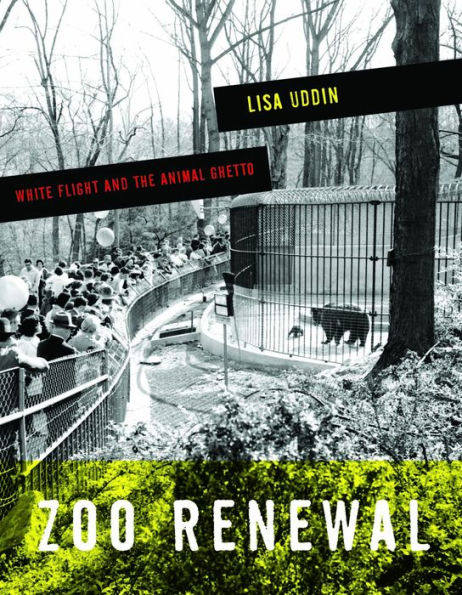Zoo Renewal: White Flight and the Animal Ghetto
Why do we feel bad at the zoo? In a fascinating counterhistory of American zoos in the 1960s and 1970s, Lisa Uddin revisits the familiar narrative of zoo reform, from naked cages to more naturalistic enclosures. She argues that reform belongs to the story of cities and feelings toward many of their human inhabitants. In Zoo Renewal, Uddin demonstrates how efforts to make the zoo more natural and a haven for particular species reflected white fears about the American city—and, pointedly, how the shame many visitors felt in observing confined animals drew on broader anxieties about race and urban life. Examining the campaign against cages, renovations at the National Zoo in Washington, D.C. and the San Diego Zoo, and the cases of a rare female white Bengal tiger and a collection of southern white rhinoceroses, Uddin unpacks episodes that challenge assumptions that zoos are about other worlds and other creatures and expand the history of U.S. urbanism. Uddin shows how the drive to protect endangered species and to ensure larger, safer zoos was shaped by struggles over urban decay, suburban growth, and the dilemmas of postwar American whiteness. In so doing, Zoo Renewal ultimately reveals how feeling bad, or good, at the zoo is connected to our feelings about American cities and their residents.
"1120805408"
Zoo Renewal: White Flight and the Animal Ghetto
Why do we feel bad at the zoo? In a fascinating counterhistory of American zoos in the 1960s and 1970s, Lisa Uddin revisits the familiar narrative of zoo reform, from naked cages to more naturalistic enclosures. She argues that reform belongs to the story of cities and feelings toward many of their human inhabitants. In Zoo Renewal, Uddin demonstrates how efforts to make the zoo more natural and a haven for particular species reflected white fears about the American city—and, pointedly, how the shame many visitors felt in observing confined animals drew on broader anxieties about race and urban life. Examining the campaign against cages, renovations at the National Zoo in Washington, D.C. and the San Diego Zoo, and the cases of a rare female white Bengal tiger and a collection of southern white rhinoceroses, Uddin unpacks episodes that challenge assumptions that zoos are about other worlds and other creatures and expand the history of U.S. urbanism. Uddin shows how the drive to protect endangered species and to ensure larger, safer zoos was shaped by struggles over urban decay, suburban growth, and the dilemmas of postwar American whiteness. In so doing, Zoo Renewal ultimately reveals how feeling bad, or good, at the zoo is connected to our feelings about American cities and their residents.
28.0
In Stock
5
1

Zoo Renewal: White Flight and the Animal Ghetto
288
Zoo Renewal: White Flight and the Animal Ghetto
288Paperback(New Edition)
$28.00
28.0
In Stock

Product Details
| ISBN-13: | 9780816679126 |
|---|---|
| Publisher: | University of Minnesota Press |
| Publication date: | 04/01/2015 |
| Series: | A Quadrant Book |
| Edition description: | New Edition |
| Pages: | 288 |
| Product dimensions: | 7.00(w) x 9.00(h) x 1.00(d) |
About the Author
From the B&N Reads Blog
